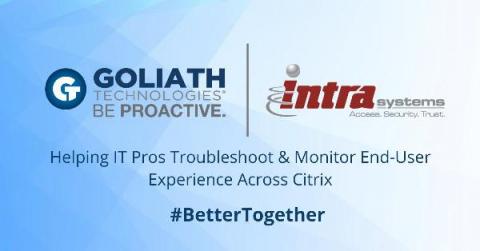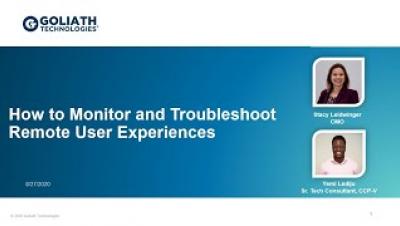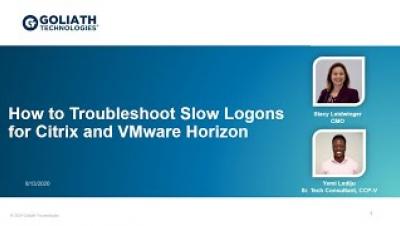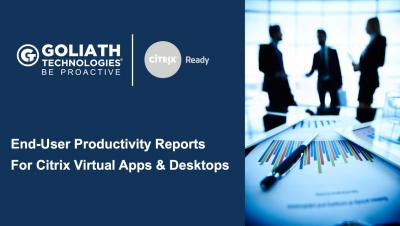Operations | Monitoring | ITSM | DevOps | Cloud
Citrix
7 Myths of Citrix Performance Monitoring
Citrix digital workspaces are one of the most performance sensitive technologies being deployed in enterprise networks today. This is due to several reasons: All of this means that if there is a slight glitch in the network, in the Citrix servers, or the applications being accessed, this can result in poor performance for users. In this blog, we review some of the most common myths about Citrix performance monitoring that we have encountered.
IntraSystems and Goliath Announce Strategic Partnership
Braintree, MA and Philadelphia, PA – Sept 3, 2020 – IntraSystems, Inc., a Citrix Worldwide Partner of the Year, and Goliath Technologies, a Citrix Ready partner offering end-user experience monitoring and troubleshooting software, announced their new strategic partnership.
How To Monitor & Troubleshoot Remote Worker User Experiences
How to Troubleshoot "Citrix is Slow" for Remote Workers
The COVID-19 pandemic has disrupted how every business on the planet works. Remote working has become the new normal, and IT needs to adapt quickly to support this somewhat new way of working. I say new way of working, but it isn’t actually new at all in the grand scheme of things. People have been working outside of the office, such as from home or other public places, for many years now.
Deploying Citrix ADC with Service Mesh on Rancher
As a network of microservices changes and grows, the interactions between them can be difficult to manage and understand. That’s why it’s handy to have a service mesh as a separate infrastructure layer. A service mesh is an approach to solving microservices at scale. It handles routing and terminating traffic, monitoring and tracing, service delivery and routing, load balancing, circuit breaking and mutual authentication.
How to Troubleshoot Slow Citrix or VMware Horizon Logons
Terralogic, IT Service Provider, Avoids 'Citrix is Slow' Escalations
Terralogic is a USA based software and IT services company with expertise in IoT, Cloud, DevOps, Citrix, App development, Cybersecurity and more. They turned to Goliath because their Citrix Architects were spending too much time troubleshooting basic Citrix end-user experience issues around slow logons, applications failing to launch, and overall slow performance. They needed a solution that would enable their Level 1 Service Desk to resolve more issues on their own, avoiding escalations.











